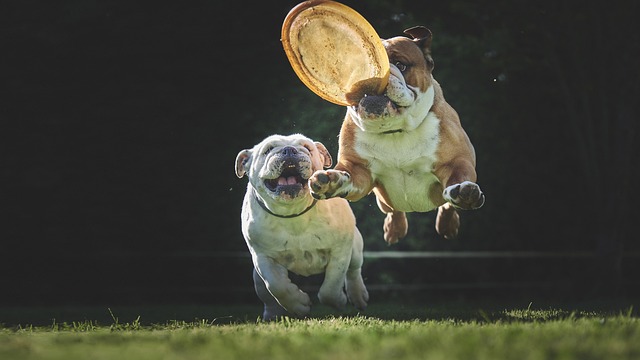Imagine bringing home your adorable new puppy for the first time. The excitement and joy are palpable as you envision all the wonderful moments you’ll share together. But amidst this exhilaration, it’s crucial to set a solid foundation for your furry friend’s development. In “The First 48 Hours: Setting Your Puppy Up for Success from Day One,” this comprehensive and detailed article aims to educate and inform individuals and families embarking on this journey. From creating a safe space to establishing routines and introducing basic training, this essential guide is designed to ensure that the first 48 hours with your puppy pave the way for a lifetime of happiness and harmony.
The First 48 Hours: Setting Your Puppy Up for Success From Day One
Introduction
Congratulations on bringing home your new puppy! This is an exciting time filled with joy and new adventures. However, it’s important to start off on the right foot and set your puppy up for success from day one. In this comprehensive guide, we will walk you through everything you need to know to ensure a smooth transition and a happy, healthy puppy. From puppy-proofing your home to establishing routines and addressing common challenges, we’ve got you covered.
Heading 1: Preparing for the Arrival
Subheading 1: Puppy-proofing your home
Before your puppy arrives, it’s crucial to puppy-proof your home to create a safe environment. Puppies are naturally curious and inclined to explore their surroundings, so take a moment to identify potential hazards in your home. Secure loose wires, store toxic substances out of reach, and remove any small objects that could be a choking hazard. Additionally, block off areas that are off-limits to your puppy, ensuring their safety and your peace of mind.
Subheading 2: Making a safe space for your puppy
Creating a safe space for your puppy is essential for their comfort and well-being. Designate an area in your home where your puppy can retreat to when they need rest or alone time. This space can be a crate or a cozy corner with a comfortable bed and some toys. Make sure the area is quiet and free from potential dangers. By providing a safe space, you are giving your puppy a sense of security and a place to feel calm and relaxed.
Subheading 3: Puppy essentials checklist
To set your puppy up for success, it’s important to have all the necessary supplies ready before their arrival. Here’s a checklist of puppy essentials:
- Food and water bowls
- Quality puppy food
- Collar and leash
- Identification tags
- Comfortable bed or crate
- Chew toys and interactive puzzles
- Grooming supplies
- Training treats
- Poop bags
- Puppy pads (optional) Having these essentials on hand will ensure that you are fully prepared to meet your puppy’s needs from day one.
Heading 2: Bringing Your Puppy Home
Subheading 1: Establishing a routine
Establishing a routine is key to helping your puppy feel secure and adapt to their new home. Set consistent times for meals, bathroom breaks, playtime, and sleep. Dogs thrive on predictability, and a well-established routine will make them feel more comfortable and help with training. Be patient and give your puppy time to adjust to the new schedule.
Subheading 2: Introducing your puppy to their new environment
Bringing your puppy home can be overwhelming for them, so it’s important to introduce them to their new environment gradually. Start by allowing them to explore one room at a time, gradually expanding their access to other areas of the house. Supervise their exploration and provide positive reinforcement when they exhibit appropriate behavior. Remember to be patient and give them time to adjust to their new surroundings.
Subheading 3: Introducing other pets and family members
If you have other pets or family members, it’s crucial to introduce them to your new puppy in a controlled and positive manner. Start by allowing short, supervised interactions while closely monitoring body language and behavior. Reward calm and friendly behavior with treats and praise. Gradually increase the duration and intensity of the introductions, always prioritizing safety and ensuring a positive experience for everyone involved.
Heading 3: Feeding and Diet
Subheading 1: Choosing the right puppy food
Choosing the right puppy food is vital for your puppy’s growth and development. Look for high-quality dog food specifically formulated for puppies, as their nutritional needs differ from adult dogs. Opt for brands that use real meat as the primary ingredient and avoid those with excessive fillers and artificial preservatives. Consult your veterinarian for specific dietary recommendations based on your puppy’s breed and size.
Subheading 2: Establishing a feeding schedule
Establishing a consistent feeding schedule is essential for your puppy’s overall health and helps with house training. Divide their recommended daily food portions into multiple meals throughout the day. Puppies usually require 3-4 meals a day until they’re around 6 months old, after which you can transition to 2 meals a day. Stick to the schedule to regulate your puppy’s digestion and prevent overeating.
Subheading 3: Monitoring your puppy’s food and water intake
It’s important to monitor your puppy’s food and water intake to ensure they’re getting the right amount for their age and size. Read the feeding guidelines on the food packaging and adjust the portions accordingly. Avoid free-feeding, as it can lead to weight gain and difficult-to-predict elimination patterns. Always provide fresh water and be mindful of excessive water consumption, which could indicate an underlying health issue.
Heading 4: House Training
Subheading 1: Creating a designated elimination area
House training is one of the first challenges you’ll face as a new puppy owner. Begin by creating a designated elimination area in your backyard or on a balcony if you live in an apartment. Take your puppy to this area consistently after meals, waking up, and play sessions. Use verbal cues like “go potty” or “do your business” to associate the act with the command.

Subheading 2: Establishing a consistent bathroom routine
Consistency is key when it comes to house training. Establish a consistent bathroom routine by taking your puppy out at regular intervals throughout the day. This includes first thing in the morning, before bedtime, and after meals. Praise and reward your puppy with treats immediately after they eliminate in the designated area. Avoid punishment for accidents, as it can create anxiety and hamper the training process.
Subheading 3: Positive reinforcement and crate training
Positive reinforcement is the most effective method for house training. When your puppy successfully eliminates in the designated area, offer praise, treats, and enthusiastic encouragement. Crate training can also be a helpful tool in the house training process. Dogs have a natural instinct to keep their sleeping area clean, so crate training can teach them to hold their bladder and bowels until they are taken outside. Never use the crate as a place of punishment.
Heading 5: Sleep and Rest
Subheading 1: Providing a comfortable sleeping area
Providing a comfortable sleeping area for your puppy is essential for their physical and mental well-being. Choose a bed or crate that is appropriately sized for your puppy, allowing them to stretch and turn around comfortably. Line the sleeping area with soft bedding, ensuring it is washable and durable. Create a cozy and quiet environment by blocking out excess noise and providing a warm and soothing space.
Subheading 2: Establishing a sleep routine
Just like humans, puppies thrive on routine, and establishing a sleep routine is crucial for their development. Set consistent times for bedtime, ensuring your puppy gets enough sleep for their age and breed. Establish a pre-bedtime routine that includes quiet playtime, gentle cuddles, and a final bathroom break. This routine will signal to your puppy that it’s time to wind down and will promote a good night’s sleep for both of you.
Subheading 3: Addressing nighttime crying or restlessness
It’s common for puppies to experience nighttime crying or restlessness initially. This is often a sign of separation anxiety or simply them adjusting to their new environment. To address this, ensure your puppy has gone to the bathroom before bedtime and provide a comforting item, such as a soft toy or a worn t-shirt with your scent. Consider placing the crate or bed near your own sleeping area initially to provide reassurance. Over time, your puppy will become more accustomed to their sleeping routine and feel more secure.
Heading 6: Socialization and Training
Subheading 1: Exposing your puppy to new people and environments
Socialization is a crucial aspect of raising a well-adjusted and confident dog. Expose your puppy to various people, including friends, family, and strangers, while ensuring the interactions are positive and safe. Introduce them to different environments, sounds, and experiences gradually, allowing them to build confidence and develop good manners. Enroll in puppy socialization classes or organize playdates with other well-vaccinated and friendly dogs to enhance their social skills.
Subheading 2: Basic obedience training techniques
Basic obedience training is essential for your puppy’s safety and their ability to understand and follow commands. Start with simple commands such as “sit,” “stay,” and “come.” Use positive reinforcement techniques, such as treats and praise, to reward desired behaviors. Keep training sessions short, fun, and consistent to maintain your puppy’s interest and progress. Patience, consistency, and repetition are key in helping your puppy learn and respond to commands.
Subheading 3: Reinforcing positive behaviors
Reinforcing positive behaviors is crucial for shaping your puppy’s behavior and building a strong bond. Whenever your puppy exhibits good behavior, such as following commands, using the designated elimination area, or playing gently, offer praise, treats, and verbal affirmations. Consistently reward and reinforce these positive behaviors to encourage their repetition. Avoid reinforcing unwanted behaviors by ignoring or redirecting your puppy’s attention to appropriate activities.
Heading 7: Health and Veterinary Care
Subheading 1: Finding a reliable veterinarian
Finding a reliable veterinarian is essential for your puppy’s ongoing health and well-being. Look for a vet who specializes in small animals or has experience with your puppy’s specific breed. Seek recommendations from trusted sources, such as friends, family, or local pet owners. Visit potential vets and inquire about their services, hours of operation, emergency care, and their approach to preventive medicine. A good vet will be a valuable partner in ensuring your puppy receives the best possible care.
Subheading 2: Vaccinations and preventive care
Vaccinations and preventive care play a crucial role in protecting your puppy from potentially harmful diseases.

Subheading 3: Monitoring your puppy’s overall health
As a responsible puppy owner, it’s important to monitor your puppy’s overall health.

Heading 8: Exercise and Playtime
Subheading 1: Choosing appropriate toys and games
Exercise and playtime are vital for your puppy’s physical and mental well-being. Choose toys and games that are safe, durable, and appropriate for your puppy’s age and breed. Avoid toys with small parts that could be swallowed, as well as those made of toxic materials. Interactive toys, puzzle games, and chew toys can help keep your puppy entertained and mentally stimulated. Rotate toys regularly to keep their interest and prevent boredom.
Subheading 2: Setting a regular exercise routine
Daily exercise is essential for your puppy’s health and helps expend their energy in a positive way. Set a regular exercise routine that includes walks, play sessions, and interactive games. The amount of exercise required will depend on your puppy’s age, breed, and health. Consult your veterinarian for specific exercise recommendations. Remember to always use a leash for walks and gradually increase the duration and intensity of exercise as your puppy grows.
Subheading 3: Promoting mental and physical stimulation
In addition to physical exercise, mental stimulation is equally important for a well-rounded puppy. Engage your puppy’s mind with puzzle toys, obedience training, and interactive games. Teach them new tricks and provide opportunities for problem-solving. Mental stimulation helps prevent boredom, reduces anxiety, and strengthens the bond between you and your puppy. Incorporate these activities into your daily routine to keep your puppy mentally sharp and satisfied.
Heading 9: Separation Anxiety and Loneliness
Subheading 1: Gradual desensitization to being alone
Separation anxiety is a common issue for puppies as they adjust to being away from their littermates and become accustomed to your absence. Start by gradually desensitizing your puppy to being alone. Leave them alone for short periods and gradually increase the duration over time. Provide a comfortable and secure area for your puppy during your absence, such as a crate or a cozy room. Using positive reinforcement and treats, associate your departure with positive experiences to help alleviate separation anxiety.
Subheading 2: Providing comforting alternatives
To help ease your puppy’s loneliness, provide them with comforting alternatives when you need to be away. Leave them with a comforting item, such as a piece of clothing that carries your scent, or a special toy to keep them occupied. Consider leaving on soft music or using a white noise machine to create a soothing environment. These comforting alternatives can help reduce anxiety and make your puppy feel more secure.
Subheading 3: Seeking professional help if needed
If your puppy’s separation anxiety or loneliness persists despite your efforts, it may be necessary to seek professional help. Consult with a qualified dog trainer or a veterinary behaviorist who specializes in anxiety and behavior issues. They can provide guidance, create a tailored behavior modification plan, and recommend additional strategies or therapies to help your puppy overcome separation anxiety and loneliness.
Heading 10: Patience and Consistency
Subheading 1: Understanding that puppies need time to learn
It’s important to understand that puppies need time to learn and adapt to their new environment. Be patient and realistic in your expectations. Remember that behavior and training take time, so avoid getting frustrated or overwhelmed. Celebrate small victories and progress, and recognize that each puppy is unique and will develop at their own pace. With patience, consistency, and positive reinforcement, your puppy will continue to grow, learn, and thrive.
Subheading 2: Consistently enforcing rules and boundaries
Consistency is key in training your puppy and enforcing rules and boundaries. Establish clear expectations and guidelines from the beginning, and ensure that all family members are on the same page. Consistent reinforcement of desired behaviors and gentle redirection for unwanted behaviors will help your puppy understand what is expected of them. Remember to always use positive reinforcement techniques and avoid punishment, as it can lead to fear or aggression.
Subheading 3: Celebrating progress and milestones
As you embark on this journey with your new puppy, it’s important to celebrate their progress and milestones along the way. Whether it’s successfully completing house training, learning a new command, or developing social skills, take the time to acknowledge and celebrate these achievements. Reward your puppy with praise, treats, and extra playtime. Celebrating their progress will strengthen the bond between you and your puppy, making your journey together even more rewarding.
Conclusion
By following these guidelines and incorporating them into your puppy’s routine, you are setting a solid foundation for a happy and well-adjusted dog. Remember that each puppy is unique, and it’s essential to adapt these recommendations to suit your specific needs and circumstances. Enjoy this precious time with your new furry family member and cherish the memories as you watch them grow into a loving and loyal companion.


